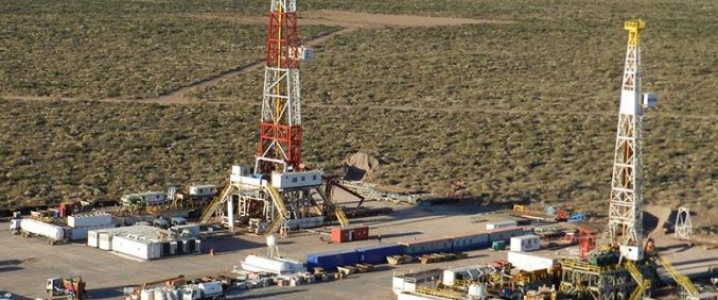Vaca Muerta, the “Dead Cow” shale formation in Argentina’s west, is believed to be one of the largest shale plays globally, “the Argentine Permian”, and the play that can turn Argentina from a net importer of oil and gas into a net exporter. A number of supermajors have been quick to join state energy company YPF and production of both gas and crude is growing. But the long-term prospects of Vaca Muerta are dimmed by troubles that are making the cost of extracting the oil and gas in the shale play too expensive.
S&P Global Platts’ Charles Newberry wrote in a recent story that Vaca Muerta has attracted as much as US$165 billion in investment commitments but now the companies that have bet on the play need to cut their production costs to make their projects profitable.
Newberry quotes Shell’s general manager for unconventional ventures in Latin America, Laurens Gaarenstroom, as saying costs need to be cut to below US$40 a barrel to make things work in Vaca Muerta. This, Gaarenstroom said, involved reducing the costs for frack sand, logistics, fracking, and services.
Rystad Energy analysts also believe the cost of extracting oil and gas from the Vaca Muerta play are too high at present. “Cost is where we need to see a lot of progress before Vaca Muerta really becomes competitive from the global perspective,” the company’s head of shale research, Artem Abramov told the Journal of Petroleum Technology.
In 2017, according to Rystad data, the cost of fracking a well in the Vaca Muerta was the highest, compared with the major U.S. shale plays, at US$1,631 per foot versus US$806-1,111 per foot in the Permian, and as little as US$674 in Bakken.
Improving the drilling costs is a problem for engineers to solve but it’s not the only one for Vaca Muerta operators. Fracking wells needs a lot of sand, the so-called proppant that keeps the oil and gas flowing once a well is fracked. But there is no sand mine anywhere near the Vaca Muerta; it has to be trucked in from 600 to 1,400 km away, Newberry notes, which is a substantial transportation cost burden that needs relieving. The Argentine government is planning the construction of a railway in this respect but it will take an unclear amount of time and will only cut about 5-10 percent of field development costs. Related: The Natural Gas Crash Isn’t Over
As if this is not enough, there is also a looming shortage of oilfield services crews. Despite the cost challenges, activity in the Vaca Muerta is ramping up: the latest announcement in this respect came from Shell, which said at the end of last year it planned to begin the full-scale development of three blocks in the Vaca Muerta this year, eyeing production of 40,000 barrels of oil equivalent by 2021, and 70,000 boed later.
The endeavor will involve drilling more than 300 wells, building an oil processing plant, and constructing 100 km of roads, 75 km of pipelines, as well as power lines and water storage facilities. And that’s just one company and one project. Add Chevron, Exxon, YPF, Total, and other operators, all determined to show their investors something for the money they poured into the shale play, and a workforce and resources shortage becomes less than unsurprising; it becomes something that should have been anticipated and planned for but somehow wasn’t.
According to Argentine government estimates, the Vaca Muerta could double the country’s oil production to 1 million bpd by 2023, with natural gas production rising to 260 million cubic meters daily. First, however, operators will have to cut costs to make this happen.
By Irina Slav for Oilprice.com
More Top Reads from Oilprice.com:
- The 3 Continents Driving Global Energy Demand
- Colombia’s Oil Rebound Off To A Rough Start In 2019
- Darkening Outlook For Global Economy Threatens Crude


















